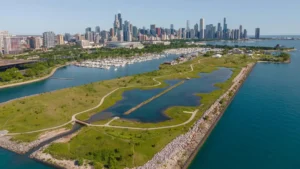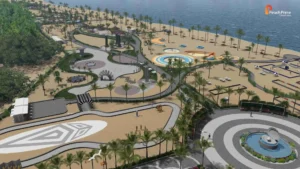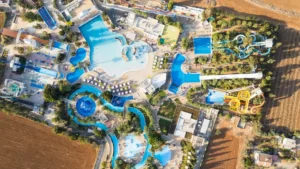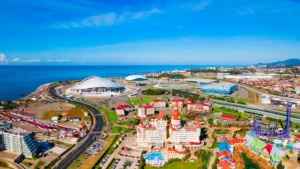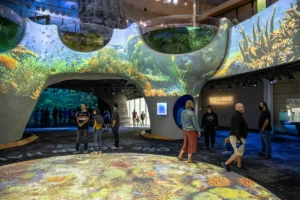Blogs
Master Planning and Designing Science Museums: Creating Engaging Educational Spaces for All Ages with Entertainment
Science museums have become more than just places to learn about the world of science; they are immersive, interactive environments that engage visitors of all ages. Whether it’s children fascinated by the wonders of space or adults seeking to understand the mysteries of the natural world, science museums provide an educational experience like no other. Master planning and designing a science museum require careful consideration of how to balance education, entertainment, and interactivity to create an engaging experience that sparks curiosity and ignites a passion for learning.
In this blog, we’ll explore the key elements involved in designing a science museum that appeals to all ages, from interactive exhibits to entertainment spaces, and offer tips on how to create an educational environment that inspires visitors.
Understanding the Purpose of a Science Museum
Before embarking on the design process, it’s essential to establish the museum’s purpose. A science museum should not only provide knowledge but also encourage exploration, experimentation, and discovery. Here are some key considerations when determining the museum’s purpose:
- Educational Goals: What are the main topics the museum wants to cover? These could range from astronomy to robotics, biology, geology, or environmental science. Defining the scope of the museum’s focus is critical in shaping the exhibits and experience.
- Target Audience: Science museums cater to a wide audience, from young children to adults, educators, and scientists. The design should offer a mix of hands-on activities, exhibits, and programs that cater to these diverse groups.
- Interactive Learning: The museum should prioritize creating a space where visitors can engage with exhibits and materials in an interactive way. Interactive exhibits allow visitors to physically engage with scientific concepts and deepen their understanding.

Designing a Layout that Enhances Visitor Engagement
The layout of a science museum should facilitate an engaging and enjoyable visitor experience. Careful consideration of traffic flow, accessibility, and exhibit placement is essential for creating a dynamic space. Key considerations include:
- Zoning the Museum: Divide the museum into thematic zones based on different branches of science, such as physics, space, biology, and technology. Each zone should have its own aesthetic and feel that supports the educational theme.
- Visitor Pathways: Plan pathways that allow visitors to move naturally between exhibits while minimizing crowd congestion. Use the space efficiently by creating winding, exploratory routes that encourage discovery.
- Multisensory Experiences: Incorporate multisensory elements like sound, touch, and sight into exhibits. For example, tactile displays allow children to feel textures and objects, while audiovisual elements can enhance an exhibit on sound waves or space exploration.
- Rest Areas: Provide rest areas throughout the museum to encourage longer visits and accommodate guests who may need a break. These areas should be strategically located and designed in a way that doesn’t disrupt the overall flow.
Creating Immersive, Interactive Exhibits
Immersive and interactive exhibits are the backbone of modern science museums. Visitors are no longer just passive observers; they want to touch, play, and engage with the exhibits. Here are some design elements that can help enhance interactivity:
- Hands-on Exhibits: Create exhibits where visitors can actively participate, such as building structures using magnets, experimenting with water flow, or conducting simple chemistry experiments. These hands-on stations spark curiosity and provide instant feedback, reinforcing scientific concepts.
- Digital Interactivity: Use digital screens and interactive touchpoints to enhance exhibits. These could include touchscreen information panels, augmented reality (AR) experiences, or virtual reality (VR) simulations that allow visitors to explore distant planets or deep-sea environments.
- Gamification: Incorporating elements of gamification can make learning fun and engaging. For example, create challenges or quizzes that visitors can participate in throughout the museum, earning points as they solve puzzles or answer questions.
- Themed Zones: Design thematic areas such as a “Space Exploration” zone where visitors can engage with models of spacecraft or a “Human Anatomy” exhibit where they can explore the human body using interactive digital tools.

Integrating Entertainment with Education
To create a truly engaging space, science museums must blend entertainment with education. This fusion can make learning enjoyable and memorable. Consider these elements to integrate entertainment seamlessly into the museum experience:
- Live Demonstrations and Shows: Incorporate live demonstrations, such as science experiments, robotics shows, or space simulations. These performances can entertain while teaching visitors about scientific principles in a captivating way.
- Themed Events and Workshops: Host workshops, lectures, or interactive events that tie into current exhibitions. These events allow visitors to get hands-on with science and engage with experts, adding depth to the experience.
- 3D/4D Theaters: A 3D or 4D theater can offer visitors an immersive cinematic experience where they can explore underwater ecosystems, space travel, or prehistoric times. The combination of visuals, sounds, and movement adds a layer of excitement.
- Immersive Virtual Experiences: Utilize AR and VR technologies to create fully immersive environments. A VR space could allow visitors to experience a virtual journey through the human bloodstream or walk on the surface of Mars.
Sustainable and Eco-Friendly Design
Sustainability is becoming an important focus for museums across the globe. In designing a science museum, consider how the space can contribute to environmental awareness and promote sustainability:
- Energy-Efficient Design: Use energy-efficient lighting, heating, and cooling systems to reduce the museum’s carbon footprint. Solar panels, energy-efficient HVAC systems, and LED lights can help make the museum more environmentally responsible.
- Recycled Materials: Incorporate recycled or upcycled materials in construction and exhibit design. Using sustainable materials, such as reclaimed wood or eco-friendly plastics, not only reduces waste but also teaches visitors about the importance of sustainability.
- Green Spaces: Include outdoor areas with gardens or green roofs that promote biodiversity and teach visitors about local ecosystems. These spaces can provide a relaxing environment while reinforcing the museum’s educational mission.
Accessibility and Inclusivity
A successful science museum must be accessible to all visitors, egardless of their abilities. Accessibility and inclusivity are key considerations in the design process:
- Wheelchair Accessibility: Ensure that all areas of the museum are wheelchair accessible, with ramps, wide doors, and elevators where necessary. Provide designated areas for wheelchairs and other assistive devices.
- Multilingual Exhibits: Offer exhibits in multiple languages to cater to a diverse audience. This is particularly important for international visitors who may not speak the primary language of the region.
- Sensory-Friendly Spaces: Incorporate sensory-friendly spaces for individuals with autism or other sensory sensitivities. These areas could include quiet rooms with reduced lighting and sound, offering a break from the museum’s hustle and bustle.

Designing a science museum is a complex but rewarding task that blends interactive, educational spaces with entertainment and sustainability. Thoughtful design and creativity are essential for creating museums that educate, inspire, and engage visitors. At Peach Prime Consultancy, we specialize in crafting innovative science museum designs that integrate education, entertainment, and sustainability.We specialize in budget planning and cost estimation to ensure your project stays within financial expectations. By providing a detailed breakdown of the total project cost. Whether you’re planning a museum in Australia, Fiji, Kiribati, Marshall Islands, Micronesia, Nauru, New Zealand, Palau, Papua New Guinea, Samoa, Solomon Islands, Tonga, Tuvalu, Vanuatu, Sydney, Melbourne, Brisbane, Perth, Adelaide, Suva, Nadi, Lautoka, Labasa, Ba, Tarawa, Betio, Bairiki, Kiritimati, Tabuaeran, Majuro, Ebeye, Wotje, Jaluit, Kwajalein, Palikir, Kolonia, Weno, Tofol, Pohnpei, Yaren, Denigomodu, Aiwo, Nauru District, Meneng, Auckland, Wellington, Christchurch, Hamilton, Dunedin, Ngerulmud, Koror, Airai, Melekeok, or Angaur, we are ready to expand in these countries and help bring your vision to life.


